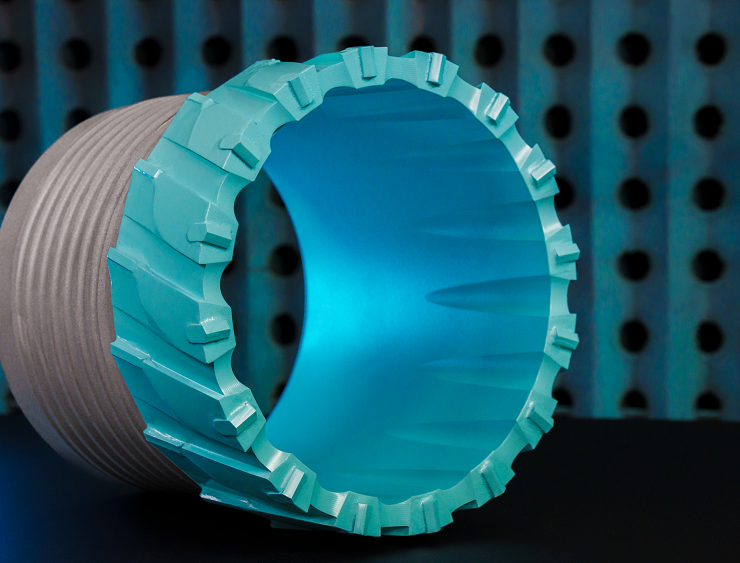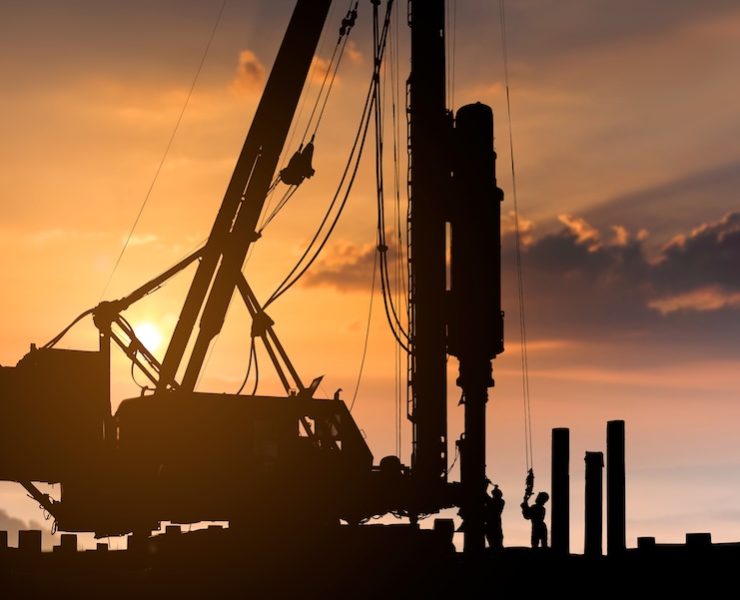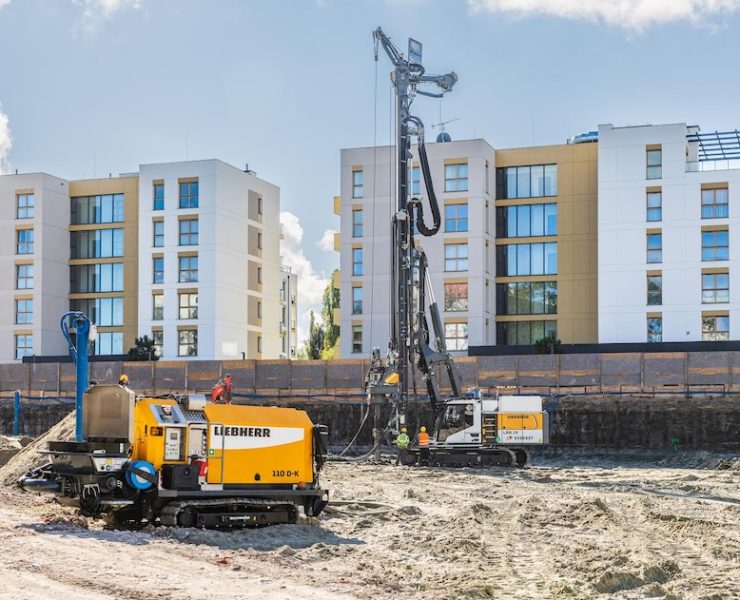Maximizing Structural Support with Tiebacks
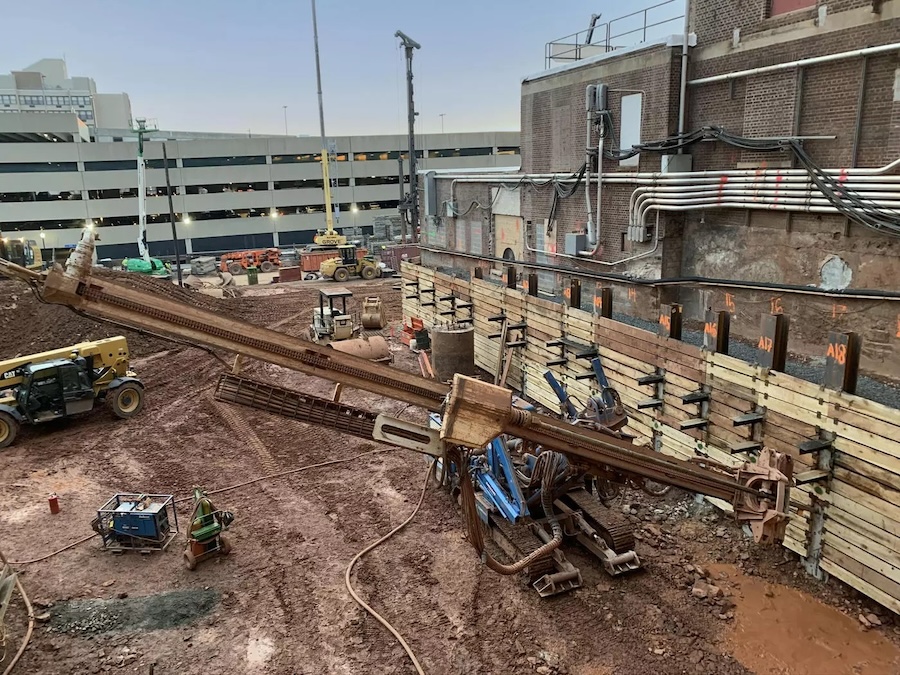

View the complete article here.
Tiebacks are structural elements used to enhance the stability of construction projects by providing additional lateral support. Composed of high-strength steel bars or strand anchors, tiebacks are installed by drilling holes into the ground and grouting the anchors in place. They are crucial in various applications—such as retaining walls, sheet piling, and slope stabilization—to resist lateral forces and prevent structural failure. The importance of tiebacks lies in their ability to reinforce both temporary and permanent support systems, ensuring safety and stability in construction projects—particularly in marine and urban environments.
Components and Materials
The key components and materials used in tiebacks include high-strength steel bars, strand anchors, and the grouting process—each playing a crucial role in ensuring the effectiveness and stability of the system.
High-Strength Steel Bars
High-strength steel bars are the primary component used in tiebacks. These bars are engineered to endure significant tensile forces, providing the necessary support to stabilize structures against lateral loads. Their robustness and durability make them ideal for various construction applications, ensuring long-term reliability.
Strand Anchors
Strand anchors are composed of multiple steel strands, offering superior flexibility and strength compared to single bars. This design allows them to adapt to various soil conditions and load requirements, making them a versatile option for reinforcing structures. Their use in tiebacks enhances the overall stability and performance of the support system.
Grouting Process
The grouting process is crucial in the installation of tiebacks. It involves injecting a grout mixture into the drilled hole, which then solidifies around the anchor. This solidification creates a strong bond between the anchor and the surrounding soil, ensuring effective load transfer and stabilization. Proper grouting is essential for the integrity and durability of the tieback system.
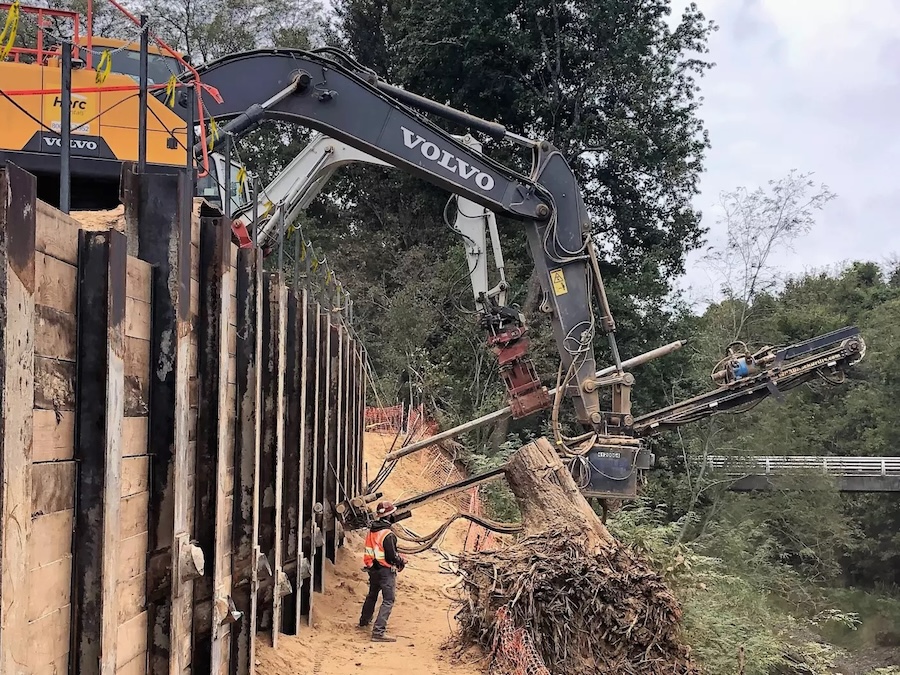
Applications of Tiebacks
Tiebacks serve various critical roles in construction, providing essential support and stability in multiple applications.
Retaining Walls
Tiebacks are commonly used in both temporary and permanent retaining walls. In temporary applications, they provide essential support during excavation and construction activities—ensuring stability until permanent structures are in place. For permanent retaining walls, tiebacks offer long-term reinforcement—helping to withstand lateral soil pressures and maintaining the integrity of the wall over time.
Sheet Piling
In marine construction and excavation, tiebacks play a crucial role in stabilizing sheet piling. Sheet piles are used to create barriers that retain soil or water, and tiebacks provide additional support to these barriers—preventing them from collapsing under pressure. This application is particularly important in waterfront projects and deep excavations where the stability of the soil and the structure is paramount.
Slope Stabilization
Tiebacks are vital in slope stabilization projects, where they help prevent landslides and erosion. By anchoring the soil and providing lateral resistance, tiebacks ensure the stability of slopes in both natural and constructed environments. This application is essential for protecting infrastructure and inhabited areas located on or near slopes.
Reinforcing Existing Structures
Tiebacks are also used to reinforce existing structures, such as failing walls and older buildings. By installing tiebacks, these structures can gain additional lateral support—effectively extending their lifespan and improving safety. This method is particularly useful in retrofitting and upgrading infrastructure to meet modern standards without the need for complete reconstruction.
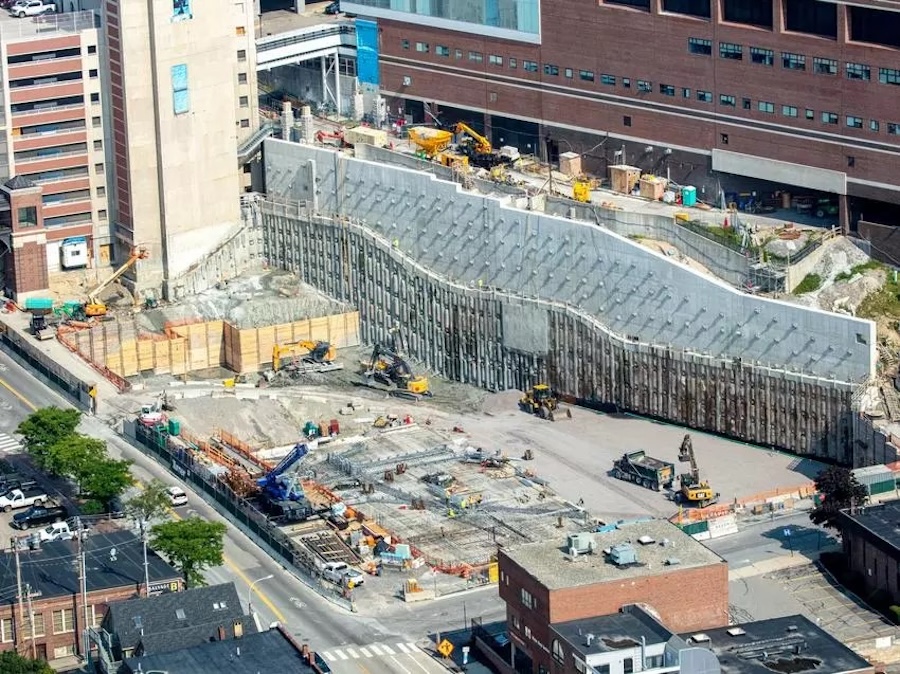
Advantages of Tiebacks
Tiebacks provide additional support against lateral forces by anchoring structures into more stable soil or rock layers. This effectively distributes and resists the pressure exerted by soil or water—enhancing the stability of retaining walls, sheet piling, and other structures.
The flexibility of tiebacks allows them to be used in different types of construction projects. They are suitable for both temporary excavation supports and permanent retaining walls, and they can be applied in diverse environments—including urban settings and marine construction.
Using high-quality materials and proper installation techniques ensures the long-term benefits of tiebacks. This makes them a reliable and enduring solution for structural stability, reducing the need for frequent maintenance and repairs—and contributing to the overall cost-effectiveness of construction projects.
Installation Process
The installation of tiebacks involves several critical steps to ensure their effectiveness and stability.
Drilling the Hole
The first step in the installation of tiebacks is drilling the hole. Site preparation involves ensuring the area is clear of obstacles and preparing the necessary drilling equipment. Marking accurately identifies the location where the tiebacks will be installed. Drilling uses a drilling rig to create a hole at the marked location, which should be drilled to the specified depth and angle to reach the desired anchoring stratum. After drilling, cleaning the hole removes any debris or loose material that may affect the anchor’s performance.
Placing the Anchors
Once the hole is prepared, the next step is placing the anchors. Anchor preparation involves selecting the appropriate high-strength steel bars or strand anchors based on project specifications. Carefully inserting the anchors into the drilled hole ensures they are positioned correctly and reach the required depth. If using strand anchors, tensioning them to the specified load ensures they are properly engaged with the surrounding soil or rock—which may involve the use of hydraulic jacks or other tensioning equipment.
Grouting the Tiebacks
Proper grouting is essential to ensure the stability and effectiveness of the tiebacks. Mixing the grout involves preparing the grout mixture according to project specifications—typically including cement, water, and any necessary additives to enhance performance. Grout injection fills the hole around the anchor using a grout pump, ensuring all voids and spaces around the anchor are filled to create a solid bond. Curing allows the grout to harden, with curing time varying depending on grout composition and environmental conditions. Once the grout has cured, final tensioning may be performed to achieve the specified load on the anchors.
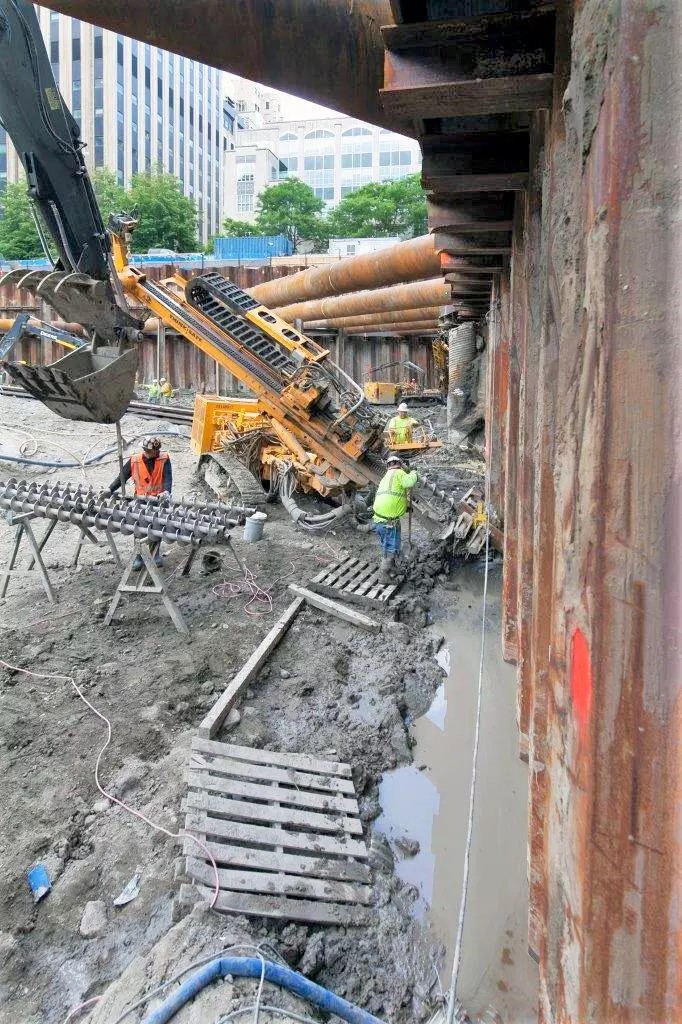
Maintenance and Inspection
Regular maintenance and thorough inspection protocols are essential to ensure the long-term effectiveness and stability of tieback systems.
Regular Maintenance Practices
Maintaining tiebacks to ensure long-term effectiveness involves several key practices. Regularly checking for signs of corrosion or wear on exposed steel components is crucial. Additionally, maintaining proper drainage around the tieback system helps prevent water accumulation—which can lead to structural weakening. Periodic tension tests should also be conducted to ensure that the tiebacks are performing as expected and maintaining the required load.
Inspection Protocols
Inspecting tiebacks and identifying potential issues involves a thorough and systematic approach. Visual inspections should be carried out to check for any visible signs of damage or degradation. Ultrasonic testing or other non-destructive testing methods can be employed to assess the integrity of the anchors and the surrounding grout. Detailed records of each inspection should be maintained to track the condition of the tiebacks over time and to plan for any necessary repairs or adjustments.
Case Studies
These case studies illustrate the vital role of tiebacks in ensuring the success of construction projects, highlighting best practices and lessons learned.
Case Study 1: Seawall Reinforcement in a Coastal City
A coastal city faced significant erosion and structural instability of its seawall due to strong tidal forces and storm surges. Engineers installed high-strength steel tiebacks by drilling deep holes behind the seawall and securing steel bars with grout. The reinforced seawall successfully withstood subsequent storms, protecting the waterfront area and preventing damage. The project highlighted the importance of early intervention and reinforcement for coastal stability.
Case Study 2: Bulkhead Construction at a Marine Terminal
A marine terminal required a bulkhead to support heavy equipment and cargo operations in soft, water-saturated soils. Tiebacks provided lateral support, with strand anchors tensioned and grouted to achieve resistance against soil and water pressures. The bulkhead performed well, supporting heavy loads and maintaining stability—showcasing the effectiveness of tiebacks in challenging soil conditions.
Case Study 3: Deep Excavation for an Urban High-Rise
In constructing a high-rise in a densely populated urban area, deep excavation required stabilizing retaining walls to prevent soil movement and protect nearby buildings. Engineers implemented tiebacks by drilling and grouting high-strength steel bars. The tiebacks ensured stability, allowing the high-rise construction to proceed without incidents—demonstrating the necessity of tiebacks for urban excavation stability.
View the complete article here.
What are tiebacks used for in construction?
Tiebacks provide lateral support to structures, preventing failure and stabilizing retaining walls, sheet piling, and slopes.
How are tiebacks installed?
Tiebacks are installed by drilling holes, placing high-strength anchors, grouting them in place, and tensioning to provide stability.














